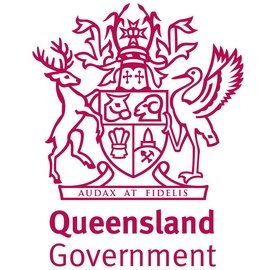Led by Professor Scott Eacott from UNSW Sydney, researchers have exposed how Sydney’s soaring house prices and rental costs are impacting on the teacher shortage crisis currently gripping schools.
Now having turned their focus to the changing nature of teacher commutes, Eacott says the prospect of enduring longer and often more stressful trips into schools in typically ‘desirable’ areas will not fly for many.
“There’s a few parts to it,” Eacott tells EducationHQ.
“One, is it’s expensive to drive around Sydney because there’s tolls – so there’s a financial cost for doing that.
“Then there’s the actual time cost, or the time sink that goes into it, if it takes you 40 minutes to get to work because of the traffic.”
A drain on wellbeing completes the triple whammy.
Eacott says that based on ABS data, most teachers take a solo car trip into work each day.
He questions at what point teachers will decide they’ve had enough of battling traffic jams, aggressive drivers and other commuting stressors after what are often intense hours spent in the classroom.
In short, what’s the commuting threshold and when will it break?
“There’s a wellbeing cost, because sitting in traffic’s not good if you’ve had a busy and stressful day at work,” Eacott says.
“You’re on your feet all day, mentally engaged all day as a teacher, so adding time to the commute before and after is taxing, it has impact on your wellbeing.
“And of course, driving in Sydney can be stressful too. You’re not just jumping on a freeway and cruising home...”
A recuitment blind spot
There’s a complexity to urban transport and teacher commutes that has never been properly considered in recruitment initiatives, Eacott notes.
“We tend to think of it a bit like the homeownership issue, as in that’s an individual choice and overreach for a system or government to get into.
“But of course, that enables transport to just be something that doesn’t get considered in workforce issues, even though where you live does have an impact on where you can work.”
Eacott points out that teachers are needed in all areas where there are school-aged children, but what happens when the city’s housing markets and rental costs outstrip teacher salaries? Are enough educators prepared to commute in?
We have a ‘perfect storm’ on our hands, Eacott says.
“People are choosing to work closer to home, for a whole bunch of reasons. Post-COVID, lifestyle, all of that type of stuff, and housing is also forcing a whole bunch of people to travel a lot further distance.”
“We imagine that when the eastern suburbs – but it applies probably equally to Northern Beaches and maybe somewhere like the Southern Shire, Cronulla, some of these places that are expensive – when the existing teachers retire, they’re not necessarily going to be replaced by people buying into the area…
“It means people are going to be forced to travel further and further to get there, and at some point in time, no matter how lovely your school is, if you have to drive past five, 10, 15 schools, one of those other schools will become more attractive.
“You won’t want to travel as far,” Eacott says.
On shaky ground
Eacott’s research predicts that while Sydney’s teacher workforce is currently holding, its “sustainability is fragile and should it collapse, the consequences would be sudden and acute”.
He foresees a situation where schools in well-established areas, where the cost of living and housing have ‘really shot up’ – schools that have never before had problems attracting staff – will be hit hard.
It’s a multi-faceted problem that demands a solution quickly, he laments.
“If we try to take a large-scale government lens, recovering from that point is very difficult, because you’re looking at land of incredible value, and often it’s not government land, so there’s not an option if it’s privately owned in convincing private developers to sacrifice profits to help staff your local schools, hospitals or anything like that.
“You know, that requires incentives…”
Above the threshold
Another thing working against teachers in Sydney schools is that most are ineligible for first homeowner schemes and the like, Eacott flags.
“What I think the challenge is, is using salaries or incomes as a threshold (in these schemes), rather than necessarily the role people play.
“Even though we often spend a lot of time talking about teacher pay, teachers do get paid relatively OK compared to the median income, compared to the median wage…” he says.
It’s often the case that only teachers fresh out of university can qualify for available assistance schemes, Eacott adds.
“But then most people who are first year out don’t have a deposit for a house because they haven’t started their actual career.
“And then, of course, there’s the threshold to how much properties cost in the market.”
Eacott has been trying to push the idea that teacher housing ought to be considered in all public infrastructure planning.
“So, if you’re planning to develop an area, just as you plan for where the schools are going to go, where the commercial sectors are, where are we going to house our teachers and our other essential workers?
“[We should] try to make it part of the planning process. We are aware, though, there’s a whole bunch of cultural changes that need to come with that as well….”















